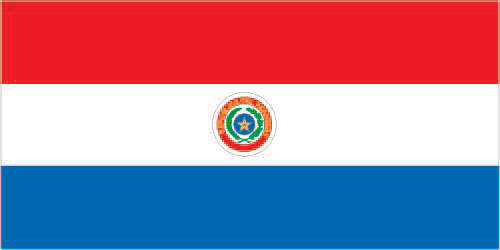
Landlocked Paraguay has a market economy distinguished by a large informal sector, featuring re-export of imported consumer goods to neighboring countries, as well as the activities of thousands of microenterprises and urban street vendors. A large percentage of the population, especially in rural areas, derives its living from agricultural activity, often on a subsistence basis. Because of the importance of the informal sector, accurate economic measures are difficult to obtain. On a per capita basis, real income has stagnated at 1980 levels. The economy grew rapidly between 2003 and 2008 as growing world demand for commodities combined with high prices and favorable weather to support Paraguay's commodity-based export expansion. Paraguay is the sixth largest soy producer in the world. Drought hit in 2008, reducing agricultural exports and slowing the economy even before the onset of the global recession. The economy fell 3.8% in 2009, as lower world demand and commodity prices caused exports to contract. The government reacted by introducing fiscal and monetary stimulus packages. Growth resumed at a 13% level in 2010, the highest in South America, but slowed in 2011-12 as the stimulus subsided and severe drought and outbreaks of foot-and-mouth disease led to a drop in beef and other agricultural exports. The economy took another leap in 2013, largely due to strong export growth. Political uncertainty, corruption, limited progress on structural reform, and deficient infrastructure are the main obstacles to long-term growth.
$45.9 billion (2013 est.)
country comparison to the world: 100
$40.98 billion (2012 est.)
$41.49 billion (2011 est.)
12% (2013 est.)
country comparison to the world: 4
-1.2% (2012 est.)
4.3% (2011 est.)
$6,800 (2013 est.)
country comparison to the world: 143
$6,100 (2012 est.)
$6,300 (2011 est.)
agriculture: 20.4%
industry: 17.7%
services: 61.9% (2013 est.)
34.7% (2010 est.)
2.3% (2013 est.)
country comparison to the world: 86
3.7% (2012 est.)
3.19 million (2013 est.)
country comparison to the world: 102
agriculture: 26.5%
industry: 18.5%
services: 55% (2008)
6.6% (2013 est.)
country comparison to the world: 69 6.9% (2012 est.)
sugar, cement, textiles, beverages, wood products, steel, base metals, electric power
5.6% (2013 est.)
country comparison to the world: 47